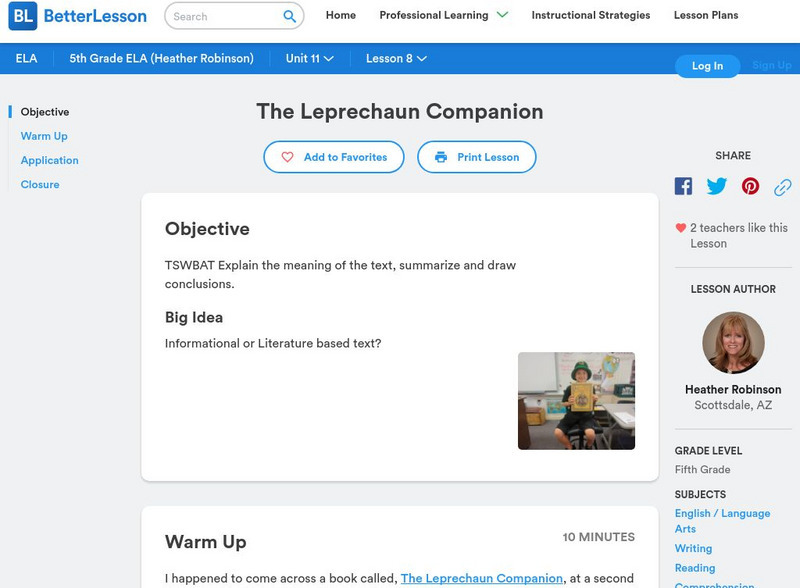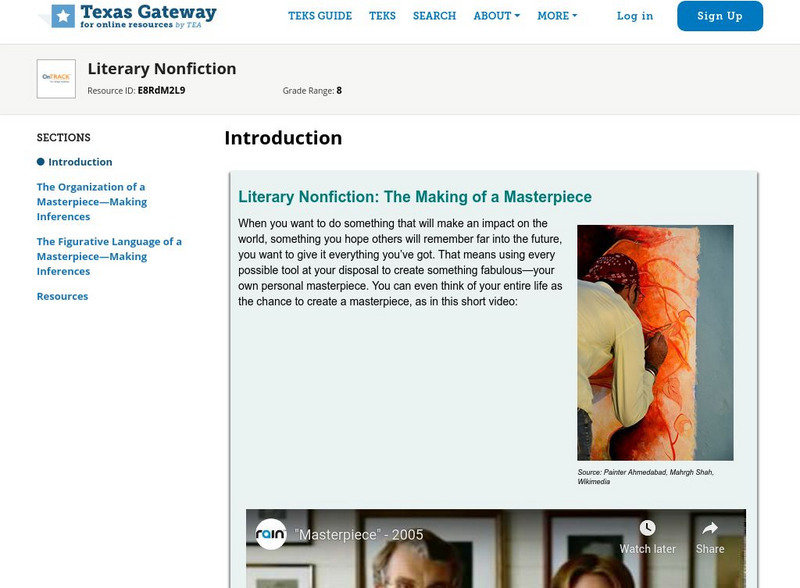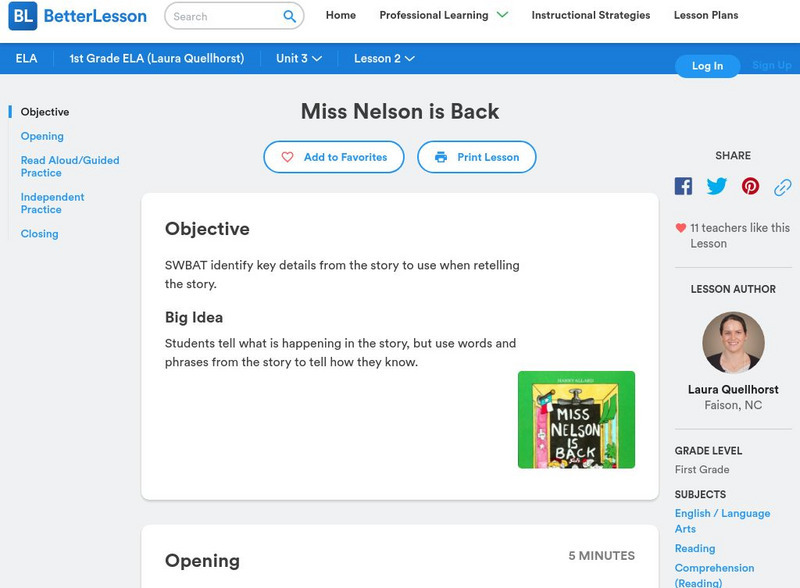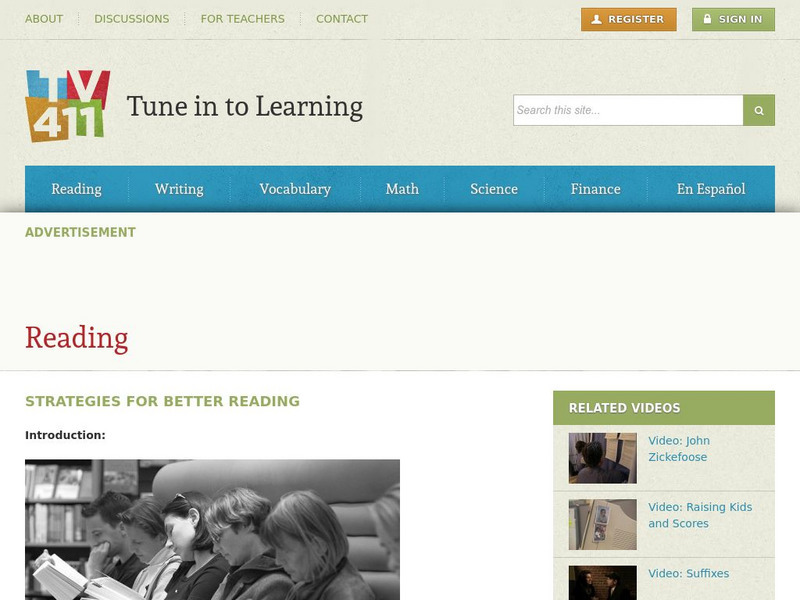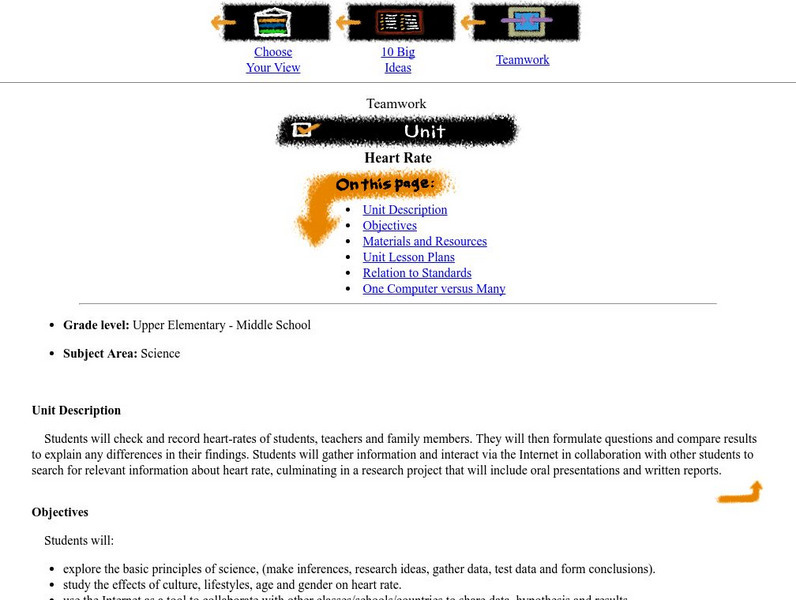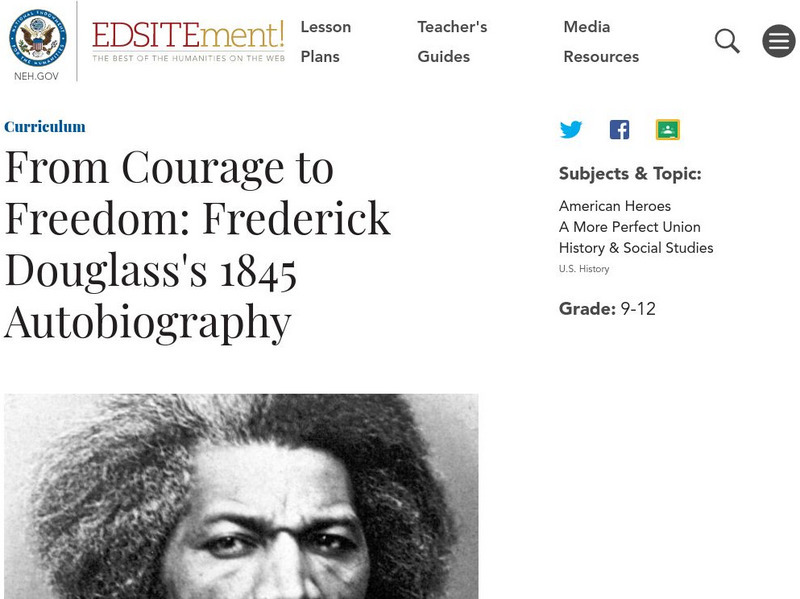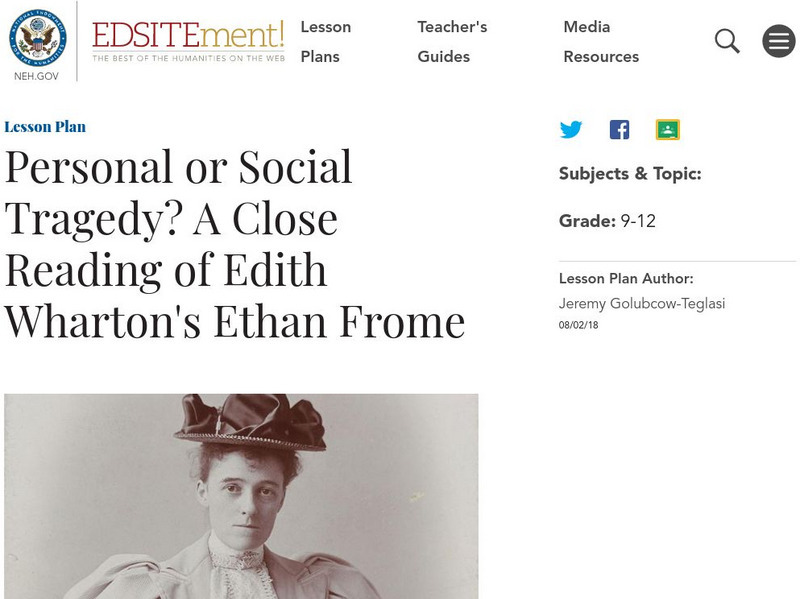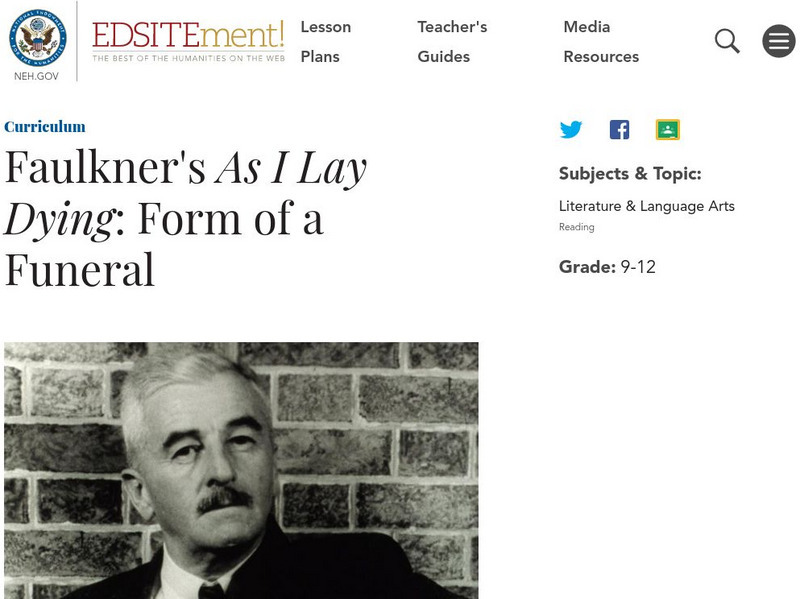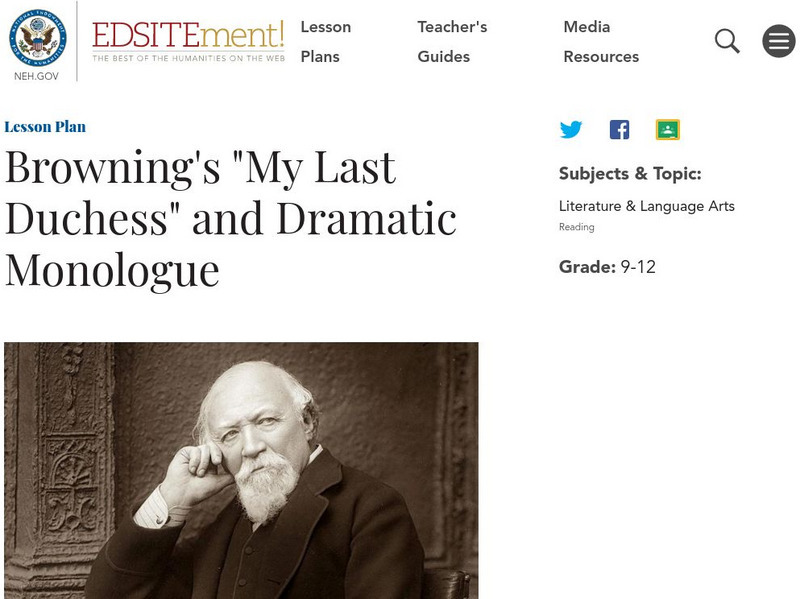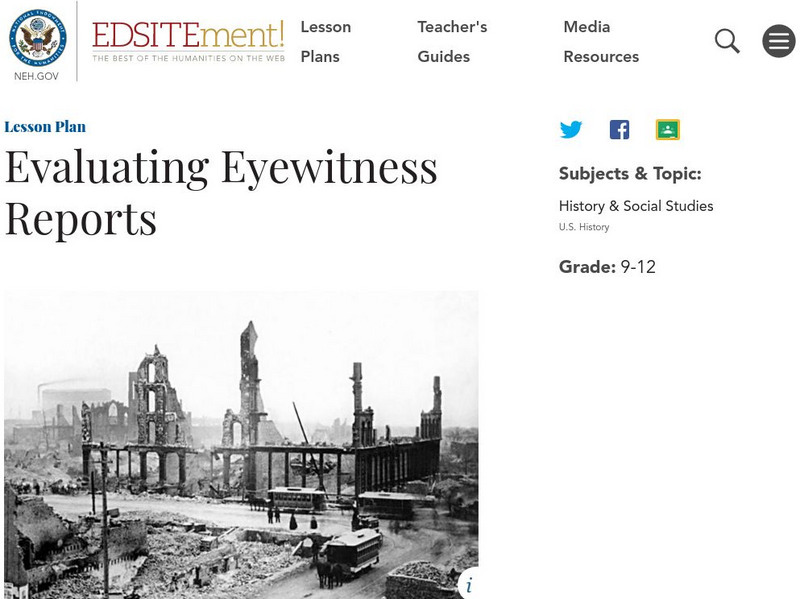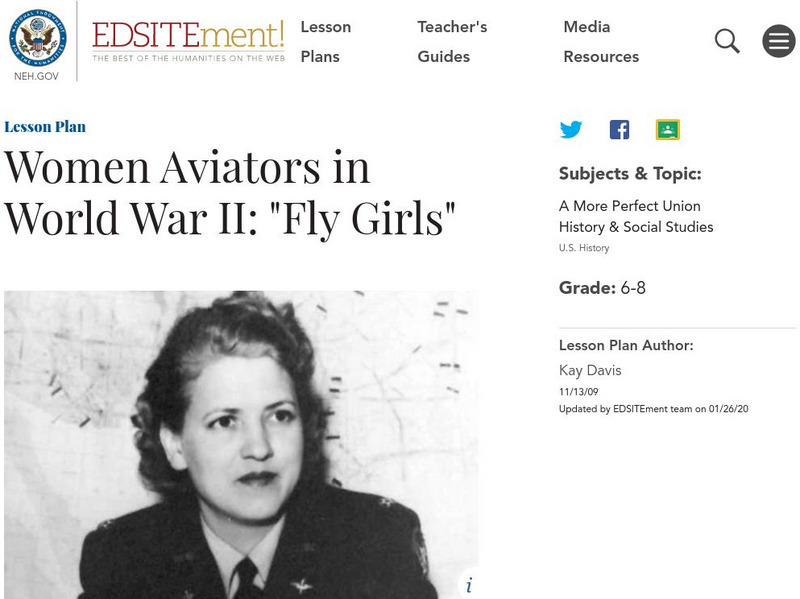Better Lesson
Better Lesson: The Leprechaun Companion
In this lesson, 5th graders will explain the meaning of a text and its genre, summarize it, and draw conclusions. They work with a book called The Leprechaun Companion which is a cross between informational and literary text.
Texas Education Agency
Texas Gateway: Literary Nonfiction
Learn how to analyze literary nonfiction, particularly speeches, by making inferences and drawing conclusions based on evidence in the text.
McGraw Hill
Read: Does Technology Make Us Lazy?
Compare these two passages for some interesting ideas about how technology affects our lives. The questions that follow ask you to identify the main idea from either direct statement or inference.
Texas Education Agency
Texas Gateway: Understanding and Analysis of Literary Text: Meter and Rhyme
OnTRACK English II Reading, Module 3, Lessons 1-12, and Practice Lessons 1-3. Students understand, make inferences and draw conclusions about the structure and elements of poetry, drama, fiction, and literary non-fiction, and provide...
PBS
Pbs Learning Media: Is This a Map of the Underground Railroad?
In this segment from History Detectives, Anne Zorela, a map collector, believes she's found a map that outlines the routes of the Underground Railroad.
Better Lesson
Better Lesson: Miss Nelson Is Back
First graders tell what is happening in the story, but use words and phrases from the story to tell how they know.
Education Development Center
Tv411: Tune in for Reading: Reading: Strategies for Better Reading
Self-checking interactive tutorial puts reading comprehension skills to work by asking learners to make inferences, predict what happens next, and identify the main ideas in a series of short reading passages. Related materials include...
Michigan State University
Michigan State University: Lets Net: Heart Rate
In this experiment, students will compare heart-rates of classmates and family member to draw conclusions about their data. Students can collect data and collaborate with others on the Internet to broaden their sample size. Lesson...
National Endowment for the Humanities
Neh: Edsit Ement: From Courage to Freedom:frederick Douglass's 1845 Autobiography
In this 3-lesson unit, students will read Douglass's narrative. They will analyze Douglass's vivid first-hand accounts of the lives of slaves and the behavior of slave owners to see how he successfully contrasts reality with romanticism...
National Endowment for the Humanities
Neh: Edsit Ement: Stephen Crane's "The Open Boat"
In this lesson, students will examine the relationship of man and nature as portrayed in "The Open Boat," based on Crane's suffering from a shipwreck on The Commodore in which he spent thirty hours on a small boat at sea before being...
National Endowment for the Humanities
Neh: Edsit Ement: Personal or Social Tragedy? Edith Wharton's Ethan Frome
This lesson plan will challenge students to weigh the textual evidence for and against the claim that Ethan's woes lay in staying in Starkfield-and not in the details of his personal relationships. In the process, students will close...
Broward Education Foundation
Broward Education Foundation: Project Living History [Pdf]
Inquiry research is self-directed and project-based on the grade-level curriculum. Middle schoolers begin an area of inquiry research becoming a critical historian. Focusing on research writing involves reading and a digital search on...
Texas Education Agency
Texas Gateway: Compare/contrast Themes and Genres in Literary Texts
You will learn how to analyze, make inferences, and draw conclusions about theme and genre in different cultural, historical, and contemporary contexts and provide evidence from the text to support your understanding.
Other
Prezi: Explicit vs. Implicit
Slideshow explains the difference between explicit and implicit meaning in texts and visuals. Includes good examples and practice questions.
National Endowment for the Humanities
Neh: Edsit Ement: Faulkner's as I Lay Dying: Form of a Funeral
William Faulkner's self-proclaimed masterpiece, As I Lay Dying, originally published in 1930, is a fascinating exploration of the many voices found in a Southern family and community. Students will explore the use of multiple voices in...
National Endowment for the Humanities
Neh: Edsit Ement: Browning's "My Last Duchess" and Dramatic Monologue
Reading Robert Browning's poem "My Last Duchess," students will explore the use of dramatic monologue as a poetic form, where the speaker often reveals far more than intended. The students will later write their own dramatic monologue...
National Endowment for the Humanities
Neh: Edsit Ement: Evaluating Eyewitness Reports
In this instructional activity, learners practice working with primary documents by comparing accounts of the Chicago Fire and testing the credibility of a Civil War diary.
National Endowment for the Humanities
Neh: Edsit Ement: Introducing Metaphors Through Poetry
This lesson is designed to help students begin to engage with metaphors on a deeper and more abstract level. The lesson will begin with a poem containing metaphors accessible at all levels, and with each poem, the lesson will progress in...
National Endowment for the Humanities
Neh: Edsit Ement: Women Aviators in World War Ii: "Fly Girls"
This lesson plan explores the contributions of the Women Airforce Service Pilots (WASPs) during World War II, and their aviation legacy. They will examine portrayals of women in World War II posters (and newsreels) and compare and...
National Endowment for the Humanities
Neh: Edsit Ement:charlotte Perkins Gilman's "The Yellow Wall Paper" Writing Women
A close reading of "The Yellow Wall-paper" employing the analysis of such literary concepts as setting, narrative style, symbol, and characterization. Students will write an essay discussing what the story suggests about middle-class...
National Endowment for the Humanities
Neh: Edsit Ement: Introducing the Essay: Twain, Douglass and American Non Fiction
This lesson plan serves as an introduction to American literary non-fiction writing and focuses primarily on teaching some basic approaches to recognizing rhetorical strategies adopted for persuasive effect in essays and non-fiction. The...
National Endowment for the Humanities
Neh: Edsit Ement: Emily Dickinson & Poetic Imagination: "Leap, Plashless"
This lesson introduces students to Emily Dickinson's poetry which often reveals a child-like fascination with the natural world. Students examine how she writes perceptively of butterflies, birds, and bats and uses lucid metaphors to...
National Endowment for the Humanities
Neh: Edsit Ement: Animal Farm: Allegory and the Art of Persuasion
This lesson plan will introduce learners to the concept of allegory by using George Orwell's widely read novella, Animal Farm. Through this novel, students will learn what an allegory is, the rhetorical components of an allegory, and...
National Endowment for the Humanities
Neh: Edsit Ement: What Makes a Hero?
In this unit, students will discuss what qualities make a hero: kid heroes, adult heroes, local heroes, and historical figure heroes. They will extend this to what qualities make historical figures heroes for them; they will research a...


